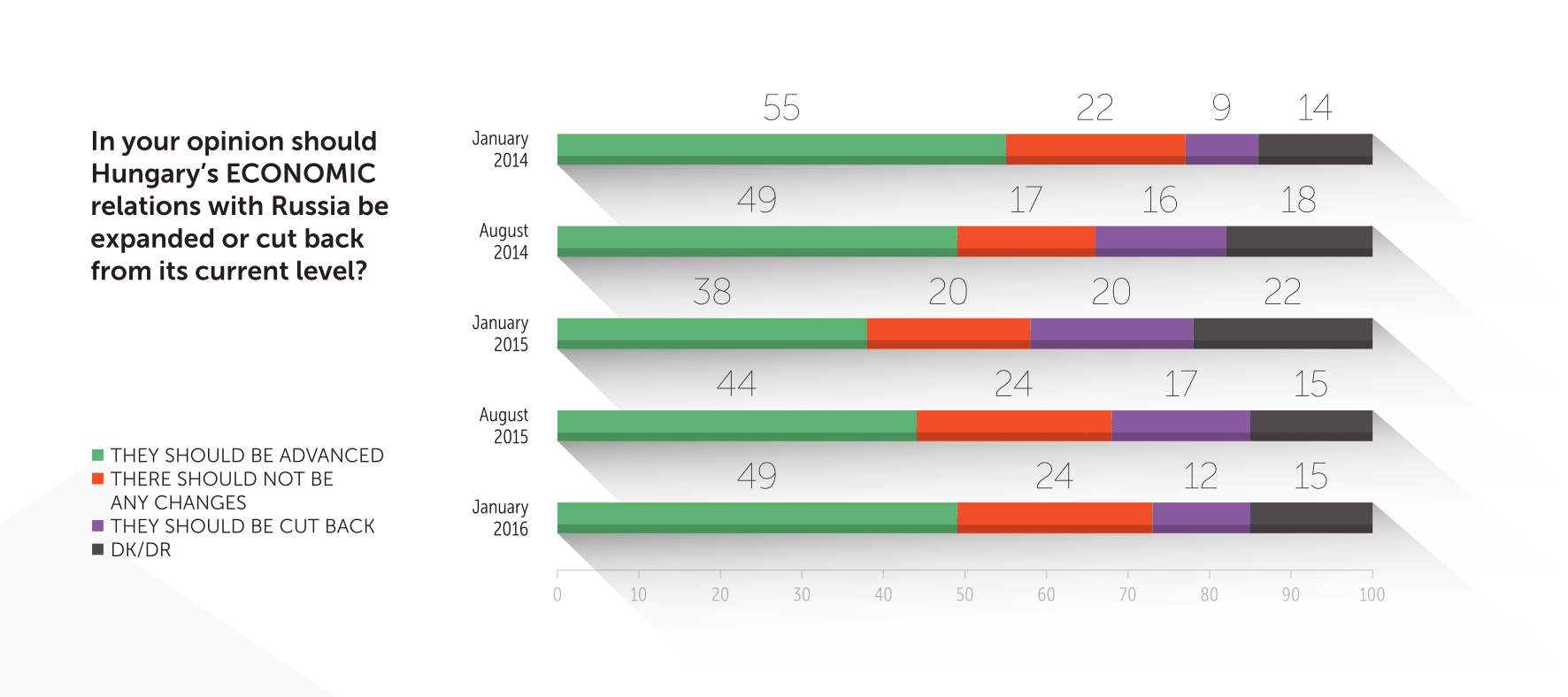One year ago only about 38 percent of the total adult population supported the expansion of Hungarian-Russian economic relations, while during the first months of this year, this ratio has increased to nearly half of all respondents (49 percent). Those in favor of fostering economic relations with Russia have approached the level that it stood at prior to the Ukrainian crisis, which was recorded in January 2014 at 55 percent.
Nézőpont Intézet has been examining the assessment of Hungarian-Russian economic relations since January 2014. At that time, 55 percent of all respondents would have advanced our economic relations with Russia. The onset of the Ukrainian crisis has negatively impacted the views of Hungarians on this issue, in August 2014 only 49 percent said that economic relations between the two countries should be intensified, while by the beginning of 2015 this ratio has dropped to 38 percent. This ratio has improved to 44 percent by August 2015 and this January, it further increased to 49 percent. Parallel to this, those opposing such relations have decreased to half the previous level within a year: those who wanted relations between the two countries to be decelerated have dropped from 20 percent to 12 percent.
Therefore it seems that Hungarians consider economic relations with Russia to be positive, but this assessment is not unrelated to global political developments. Since Russia was portrayed in a negative light as a result of the intensifying Ukrainian crisis two years ago, this had an impact on the assessment of Hungarian-Russian economic relations. Those opposing such relations, however, have never approached the ratio of those in support.
Methodology
Nézőpont Intézet’s most recent public opinion poll conducted by telephone during January 22-24, 2016 by asking 1000 people. This is a representative sample pertaining to the population 18 years of age and older, classified by gender, age, region, settlement type and schooling completed. In case of 1000 people samples the maximum margin of error is 3.2 percent.
Download here.
